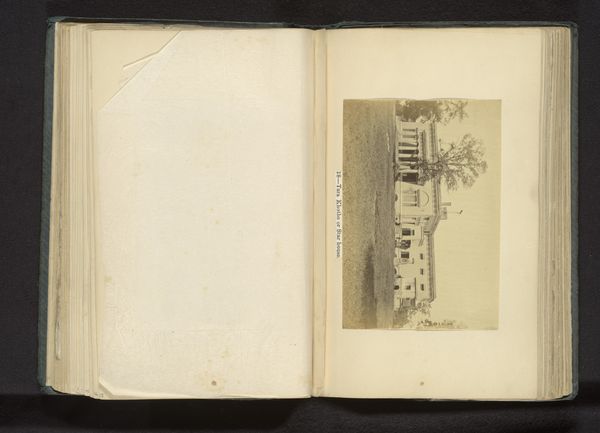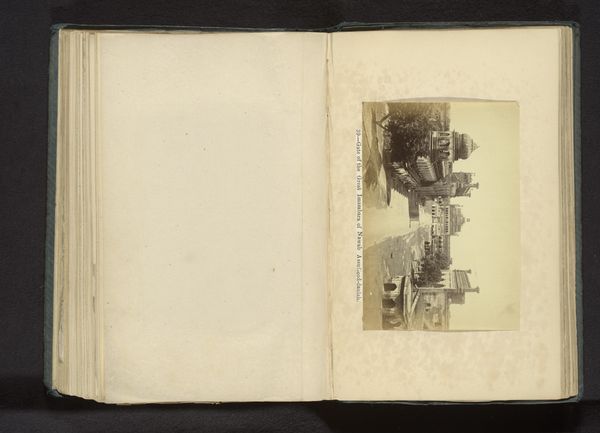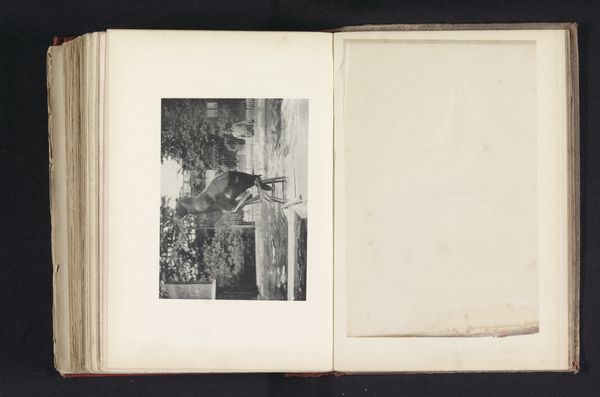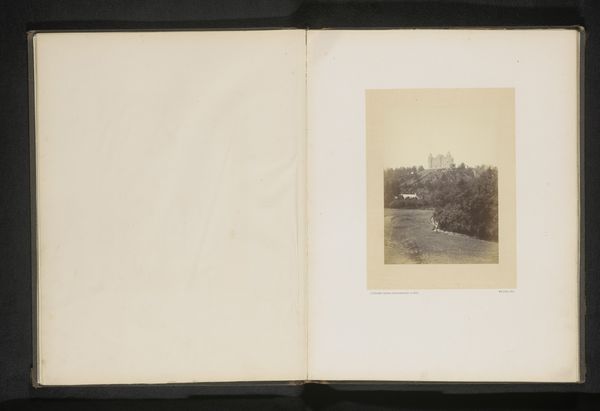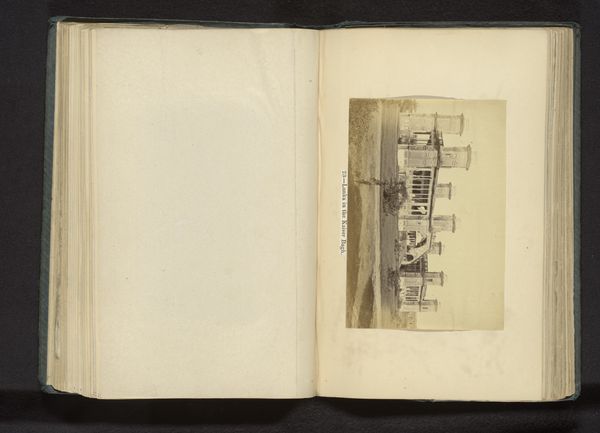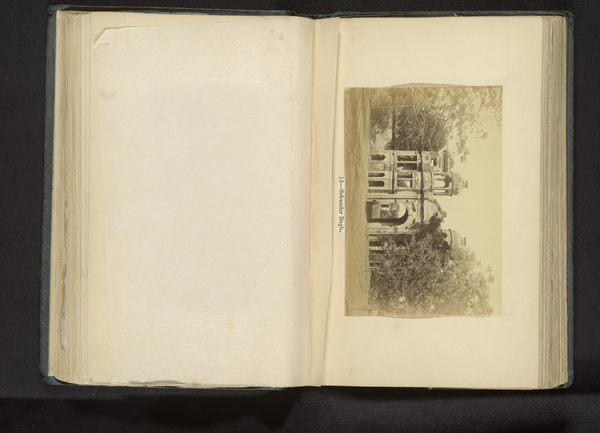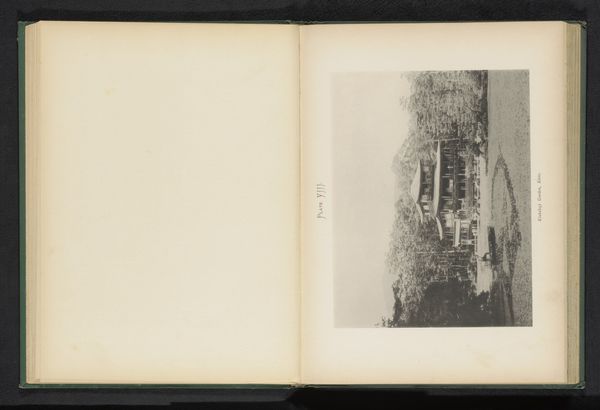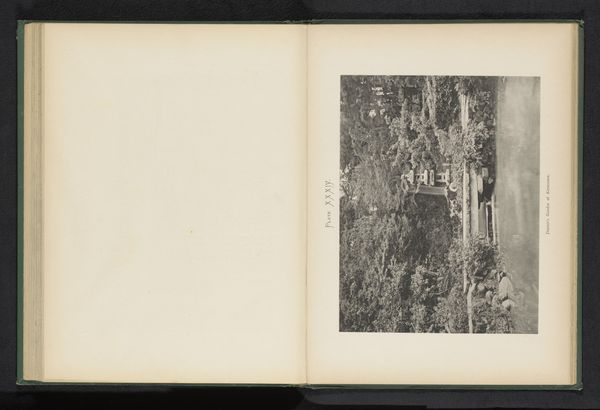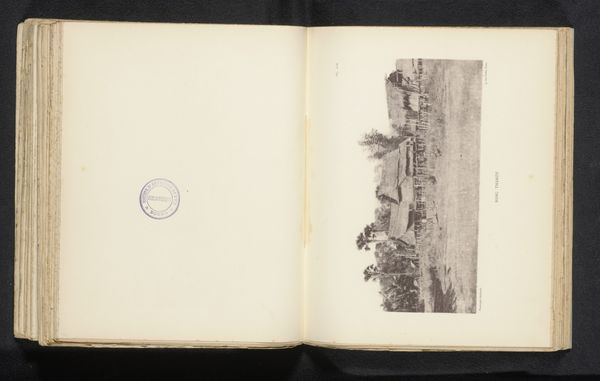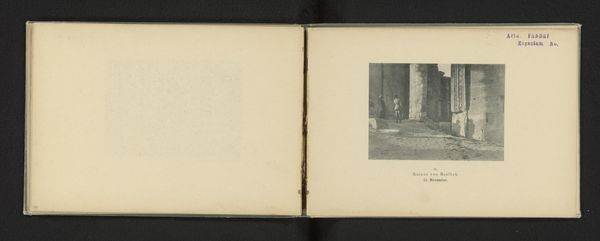
photography, albumen-print
#
aged paper
#
homemade paper
#
paperlike
#
sketch book
#
hand drawn type
#
landscape
#
photography
#
personal sketchbook
#
hand-drawn typeface
#
orientalism
#
sketchbook drawing
#
sketchbook art
#
design on paper
#
albumen-print
#
realism
Dimensions: height 105 mm, width 154 mm
Copyright: Rijks Museum: Open Domain
Curator: We're looking at a page from an album of photographs by Darogha Ubbas Alli. This image, titled "Gezicht op een poort naar Baillie Guard in Lucknow," dates to before 1874. Editor: The sepia tones give it such an antique feel. And the placement on the page creates this incredible sense of stillness, almost like a held breath. Curator: The albumen print, pasted onto this aged sketchbook page, is part of a larger visual record created by Alli, who documented the architecture and landscape around Lucknow. The Baillie Guard gate itself held a prominent role in the Siege of Lucknow during the Indian Rebellion of 1857. Editor: I’m really struck by the composition—the stark geometry of the gate against the softer, blurred background of trees. The strong lines of the architecture focus the viewer's eye and invite contemplation. Curator: Indeed, this wasn’t simply about architectural documentation; Alli's work needs to be viewed against the backdrop of colonial India and the desire to visually categorize and record the landscape. The photograph's formal qualities communicate a sense of order and control, perhaps reflective of colonial ambitions. Editor: Perhaps. But there is something in the surface of the print, in the granularity and the texture, that brings a kind of decay to this idealized notion. It suggests the impact of time on both the physical structure and the empire. Curator: It also is quite telling of the development and importance of photography in documenting global events during this period and beyond, reflecting both objective records and the perspective of the photographer, who was neither a detached observer nor an artist in the Western sense. Editor: Looking closer, the way the light catches the rough surface of the gate... it makes me wonder about the unseen hands that built it, defended it. It offers, beyond its historical significance, a palpable, sensory experience. Curator: Precisely; beyond the straight documentary reading of the image, we perceive a critical contribution of indigenous perspectives to global visual culture through this albumen print. Editor: Absolutely, I am drawn into the textures and interplay of light and shadow; it's where history meets the poetics of form, wouldn't you agree? Curator: Yes. Together, these views are indispensable for fully recognizing how deeply interwoven colonial, personal, and artistic contexts are present in photographs from this period.
Comments
No comments
Be the first to comment and join the conversation on the ultimate creative platform.
